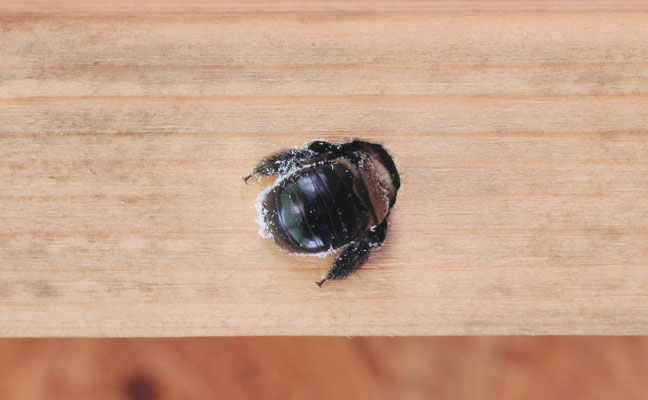
A carpenter bee drills a hole in untreated wood. Photo: Atlantagreg/iStock / Getty Images Plus/Getty Images
When it comes to carpentry, the old adage “measure twice, cut once” is a valuable rule to follow. Simply double checking your measurements can help save both time and money on a project.
When it comes to carpenter bees (Xylocopinae), the rule can be modified to “visit twice, treat once.” Like the carpenter’s measurement double-check, building a second visit into carpenter bee services can reduce the likelihood of bees returning to use existing tunnels.
Though the damage created by a single carpenter bee typically is not very severe, female carpenter bees often will return to the location from which she hatched to expand upon and excavate new galleries. Over time, one carpenter bee hole may have branching galleries extending a dozen feet in each direction, resulting from the excavations of multiple generations of bees.

Jim Fredericks
Furthermore, even though carpenter bees are not social insects, numerous females may share the same gallery system, each provisioning her brood cells with food consisting of pollen and nectar. Carpenter bees also will use abandoned tunnels if an entry hole is available.
With this in mind, a few days after the initial treatment of tunnels, schedule a follow-up visit to double check for any activity that might have been missed, and seal the holes that were previously treated. A cork or dowel pushed into the hole, followed by a matching wood putty finish, is sufficient. Otherwise, bees likely will return to the area in the future if it’s not painted or covered with aluminum or vinyl flashing.
By not sealing the holes on the day of treatment, foraging carpenter bees can return to the gallery and contact the treated tunnels. An entry hole that is sealed right away might seal the bee out, and when it returns, it will begin excavating a new tunnel.
Leave A Comment